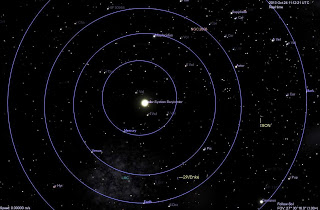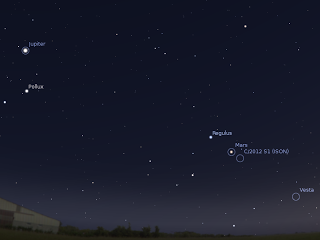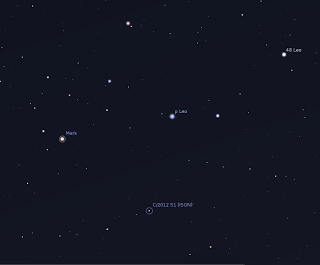

| Visitors Now: | |
| Total Visits: | |
| Total Stories: |

| Story Views | |
| Now: | |
| Last Hour: | |
| Last 24 Hours: | |
| Total: | |
Comet C/2012 S1 ISON farewells Mars, 24-31 October 2013
Comet C/2012 S1 ISON continues to brighten. Currently somewhere around magnitude 9, It should theoretically be visible in small scopes and strong binoculars, but its fuzzy, diffuse nature, its closeness to the horizon (between 7 -12 degrees depending on where you are, except Darwin and Far North Queensland, where it is more like 20 degrees above the horizon) and the closeness of the bright Moon means that it is difficult to spot visually in smaller scopes.
The Moons light will fade as the week passes, but the Moon also gets closer to ISON making it tricky to see in the coming week. The comet is just below and to the right of Mars, making finding it relatively easy. It is within a binocular field of Mars for the first few days. The it passes close by the brightish star 53 Leo (not labelled in the B7W map, but obvious) .
Some new images of ISON have been released from the Hubble Space telescope, and despite the Moonlight there are some nice images of ISON being taken by amateurs, see here and here. A printable PDF map is here.
Source: http://astroblogger.blogspot.com/2013/10/comet-c2012-s1-ison-farewells-mars-24.html






